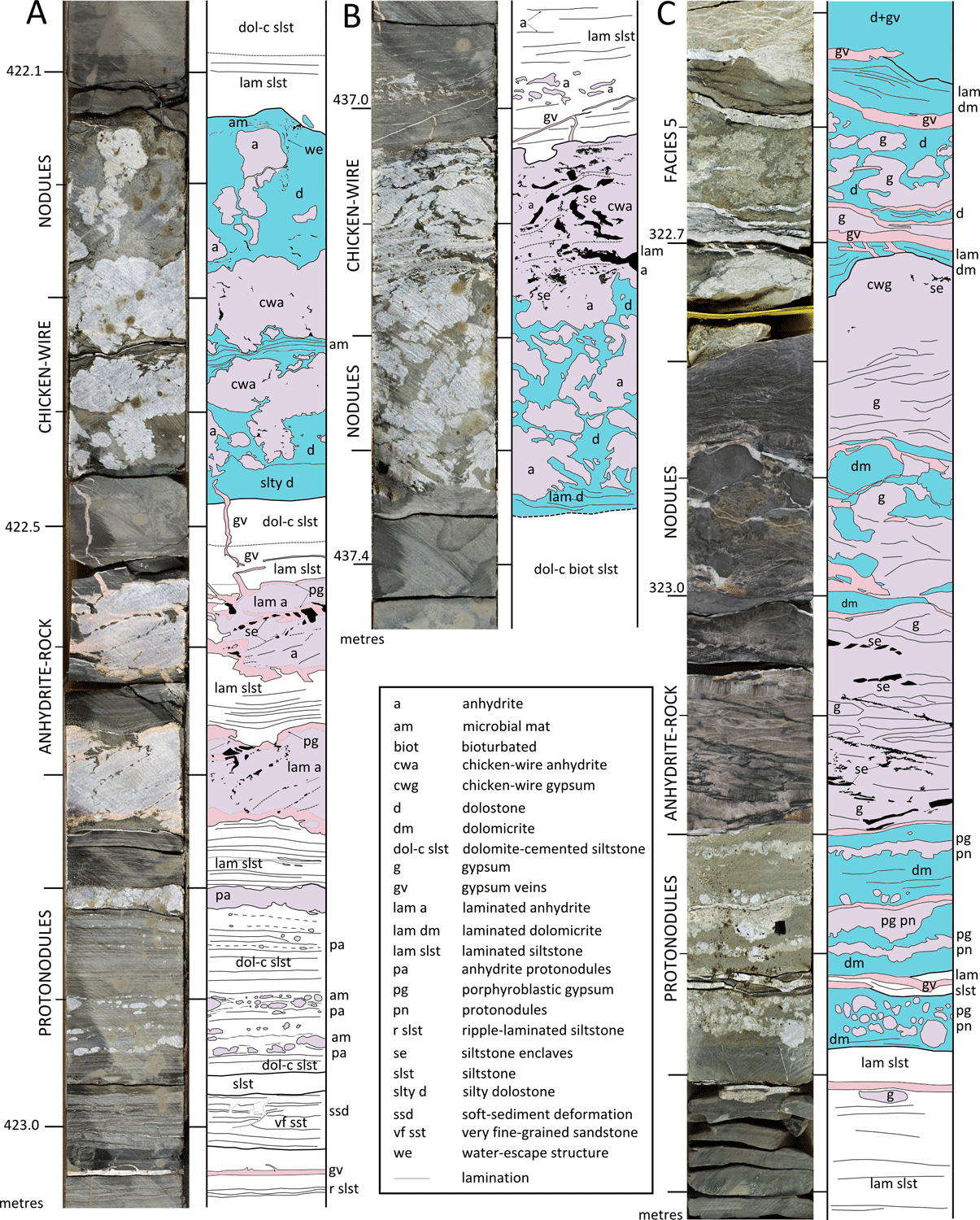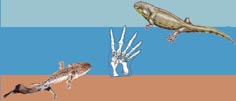Sedimentology: Gypsum deposits in the Ballagan coastal tropical wetlands
Dave Millward, Sarah Davies, Fiona Williamson, Rachel Curtis, Tim Kearsey, Carys Bennett, John Marshall, Mike Browne
In April 2018, team members published a paper in the journal Sedimentology titled “Early Mississippian evaporites of coastal tropical wetlands”. This research provides insight into the sedimentary environments of the equatorial coastal floodplain in which tetrapods first became terrestrialized around 350 million years ago. The paper is the first detailed description of abundant, thin gypsum and anhydrite (evaporite) beds from the Ballagan Formation. Gypsum and anhydrite are water soluble and are rarely seen in surface exposures of rocks such as those of the Ballagan Formation outside of arid regions. However, cores from two key boreholes in southern Scotland contain 178 intervals of gypsum or anhydrite and reveal twelve distinct forms. These data have been augmented from archived borehole logs of 40 boreholes across the Midland Valley of Scotland, providing a rare insight into the contribution of these deposits to the sedimentary environments at this critical time in Earth history.
Many, but not all, of the gypsum deposits are associated with ‘cementstones’, a characteristic component of the Ballagan Formation. These are thin, remarkably hard, beds of dolostone. The dolostone and gypsum beds are interpreted to have formed in floodplain lakes that became progressively hypersaline through evaporation. In addition, there is evidence that lake margins were locally covered by microbial mats that trapped newly crystallising gypsum. Across exposed parts of the floodplain, evaporation of groundwater formed gypsum nodules in the near subsurface. These features are typical of coastal salt flats that are seen in arid coastal regions such as the Persian Gulf.
Indeed, gypsum deposits mostly form in arid or semi-arid regimes today. However, such a model for the Ballagan Formation based on the presence of evaporites alone, conflicts with the strongly seasonal, tropical climate inferred from other research published previously by the TW:eed team. This had revealed an extensive floodplain occupied by fresh to brackish water lakes and rivers, with the low-lying, vegetated landscape prone to seasonal flooding, both resulting from the estimated mean annual precipitation of 1000-1500 mm and from the sea during storms. The co-existence of floodplain freshwater and saline lakes is seen today in the Pantanal region of Brazil and in parts of Central America and the Caribbean, though extensive evaporite deposits are rarely characteristic. Furthermore, published studies of fossilised wood from the Ballagan Formation have discovered growth rings typical of a strongly seasonal climate.
The authors argue that evaporite deposits can form in regions with a strongly seasonal climate, where the rate of evaporation greatly exceeds precipitation in a long dry season. Today, coastal wetlands with such a climate occupy more than two-thirds of the equatorial landmass, though few evaporite deposits are known. This unusual feature of the Ballagan Formation was probably a consequence of the configuration of the continents as well as its equatorial location. Evaporite formation and preservation may have also been aided by an extensive zone of saline groundwater beneath the floodplain. An exhaustive literature search failed to reveal many parallels of this unusual coastal wetland environment in the geological record. It was concluded that the presence of small-scale evaporite deposits in the rock record do not necessarily imply an arid or semi-arid climate unless corroborated by other, independent evidence. The paper is not on open access, but the abstract can be read at https://dx.doi.org/10.1111/sed.12465.

Examples of evaporite deposits from the Norham borehole core. The core is 102 mm wide. Depths in metres are given beneath the ground surface.
© Copyright 2018 Millward et al, Sedimentolgy.

